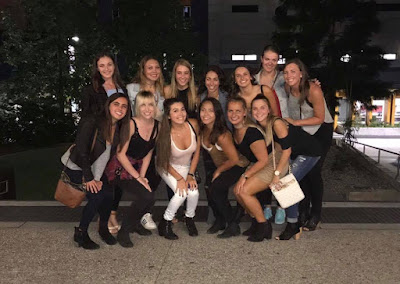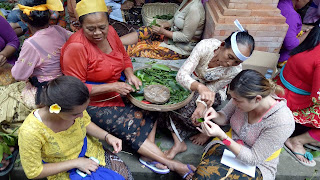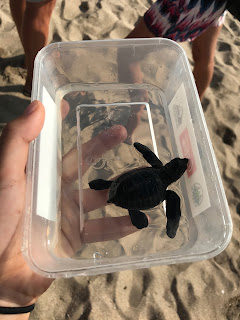I’ve considered coming back to my blog from studying abroad for the past year, and I am officially deciding to do so to post about my trip to the Navajo Nation. I’m choosing to do so for two main reasons: 1. My trip to Arizona was amazing and the Navajo culture is so unique and beautiful that I want a platform to talk about it and 2. My motivation for coming on this trip came from Australia.
A common theme that I heard during my semester abroad was that “Australia is just like America but 10 years behind.” I found that to be true in some ways, like when it came to gay marriage, and untrue in others, like when it came to gun control.
But one hot issue in Australia that was unlike anything talked about in America was native rights. In Australia, the Aboriginal rights movement is of a magnitude comparable to Black Lives Matter in the United States. There was talk of ending Australia Day because the establishment of Australia cannot be truly separated from the displacement and forced assimilation of the Aborigines. Seeing this issue in Australia made me question on a philosophical level, “can you love where you live while respecting the people who were there first?” And on a personal level, “what is happening to the Native people in my country?”
I grew up in Rochester, NY which is located in an area that was traditionally inhabited by the Seneca people. I distinctly remember learning the “SCOOM” mnemonic to help remember the Iroquois tribes in New York State and making little paper longhouses in my 4th grade class. I pass a longhouse every time I drive to my grandparents’ cottage, and I drive through the Seneca reservation every time I head to Erie for school. However, my encounters with natives in Australia made my realize that I knew little about the lives of Native American people in the 21st (or even 20th) century.
Leading up Alternative Break Service Trip to the Navajo Nation, my group and I brainstormed a list of things that we knew about modern day natives from the news. Casinos, high rates of chronic diseases (such as obesity, diabetes, and heart disease), alcoholism, and cheap gas were things that came to mind. Walking into the Navajo Nation, I wanted to know “is this the true image of the modern native?” And if so, “how could the traditional custodian of American land become so ill-served by it?”
I have gained a great appreciation of the Navajo culture during my week-long trip, and I wanted to highlight a couple of the things about the Navajo culture that stood out most to me.
In Navajo culture, understanding of life comes from the 4 cardinal directions . The Navajo reservation is bordered by 4 Sacred Mountains, each pointing to each of the cardinal directions - the San Francisco Peaks in the west, Mount Taylor in the South, Blanca Peak in the east, and Mount Hesperus in the north. Each of these directions and each of the mountains is associated with a color (blue, white, yellow, or black), a time of day (morning, day, evening, night), and a phase of life (birth, childhood, adulthood, and old age). Although I don’t know that I would’ve thought to group the cardinal directions with phases of life, grouping ideas is a common study method that our professors recommend to help build knowledge off of previously held knowledge. I found it funny that the Navajo take the same approach to understanding their world as I take to understanding hypertension meds in school. But this way of grouping ideas to explain concepts helped me to understand gender roles in the Navajo culture. Vanessa, a Navajo/Seneca woman who worked with our group, explained women do not traditionally hold public office but they choose the men who fill those roles. She compared men and women to an eagle feather, stating that the men are the sharp edge that cut the wind during flight and the women represent the opposing edge that provide balance for flight.
| The Flag of the Navajo Nation - showing the 4 Sacred Mountains in the 4 main colors |
Because the Navajo derive their understanding of life from their relationship with nature, they protect and honor nature in their activities of daily living. The Navajo people were not at all wasteful. In the process of basket weaving, the weaver will go out and collect stems of the three-leaf sumac shrub, dye them, and weave them into concentric circles. Any stems that are not used in the process are driven north where they are returned to nature.
| My turn to grind the corn into flour to make Navajo cake! |
A sweat lodge ceremony is one way that the Navajo people maintain and reinstate their relationship to the natural environment. Sweat ceremonies are performed weekly for the purpose of purification. Men and women participate in different ceremonies. The sweat lodge itself is a structure made of a frame of sticks and insulated with blankets. It is entirely dark inside with the exception of the slight glow of the red embers that heat the room. The ceremony involves sitting in the hot room for four sessions of about 20 minutes each. The twenty minutes are a time of prayer and intentional thinking.
My group was fortunate enough to be able to participate in one of the sweat ceremonies. We entered the sweat lodge on the east side of the building, and moved in a clockwise formation to find our place around the hot embers. This is the traditional way to enter a sweat lodge or hogan because it mimics the way that the sun rises in the east and the way that water drains in a clockwise rotation. In each session, we progressed from thinking of one phase of life to another. No amount of time in a sauna or hot yoga classes can prepare you for the amount of sweat produced within the sweat lodge. When the session was over, we crawled out of the sweat lodge like babies new to life. After wiping sweat from my eyes at the end of the fourth session, I felt hyper-aware of the environment around me and my connection to it. I could deeply appreciate the colors and the contours of the rocks surrounding Mr. K’s canyon home. I could feel the coolness of the red sand under my toes and two distinct cold patches where the breeze pushed my dripping sports bra and shorts to my skin. I could hear the trickle of the irrigation system and the moving of approaching cows as I tuned out the sound of my group returning the embers to the glowing fire. This image, my view when I left the sweat lodge, is one that I will not soon forget.
| The view of the canyon after being in the sweat lodge for close to an hour |
Witnessing the beauty of the Navajo culture firsthand made me wonder why more people did not know about it, but I got my answer as I learned more about the treatment of the Navajo people by the U.S. government throughout history. On our first day of the trip, we went to visit the Grand Canyon National Park and other parts of the canyon that were on Navajo land. As we stood looking over the hundreds of meters of eroded sediment to the Little Colorado River, Mr. K explained that Navajo people had to run and hide through these areas during the Long Walk. The Long Walk was a forced displacement of Navajo people from Arizona to New Mexico in 1860s because the goal of the United States at this time was to build a cross-country railroad and fulfill Manifest Destiny. Although I had known of the Trail of Tears and other times in history when displacement and ethnic cleansing of natives had occurred, I was surprised to find out that the Long Walk occurred during the Lincoln administration. One friend in my group remarked that Lincoln was her favorite president because we remember his legacy of the Emancipation Proclamation and preventing the secession of the south during the Civil War. We were all shocked to learn that a man who was remembered for ending slavery could also allow such atrocities to occur to another group of people.
The injustices to the Navajo people did not end in the 19th century. More recently, the Navajo people have been affected a law called the Bennett Freeze Act. In the wake of the Long Walk, a treaty that created the Navajo reservation was signed in 1868. Shortly after, in 1882, another treaty was signed between the United States and the Hopi natives (a neighboring tribe) which promised them a reservation as well, some of which overlapped with Navajo-promised land. The U.S. government claimed that the Bennett Freeze Act in 1966 was needed to minimize conflict between the Navajo and Hopi people, but in reality, the law provided the opportunity for private companies to mine coal and uranium on this land. This law prevented people from improving on their properties in any way, including fixing roofs and constructing water and gas lines. My own house was built less than 20 years ago, yet we still have roofers and electricians come by for occasional repairs. Imagine not being able to make any changes to your house for over 40 years! Although this law was repealed during the Obama administration, the impact of the Bennett Freeze Act continues today as only about 60% of the houses in this area have electricity.
| A Navajo women selling some turquoise jewelry - spoiler alert for some Christmas gifts. Getting a crack in your turquoise jewelry is sign of protection as it shows the stone took the blow for you. |
Although the reservation system has allowed for the preservation of Navajo culture in the Southwest, the Navajo people do not own any of their land. They must apply for a lease every 70 years in order to maintain their land, but their “property” is entirely at the discretion of the United States government. Because they do not own their land, they are not able to use it as collateral when applying for loans, which keeps them at an economic disadvantage.
To bring the issue closer to home for a minute, think of the bumpiest patch of thruway between Rochester and Cleveland. You may have sped by a red sign with lots of words that you never had a chance to read. They state, “New York State owes the Seneca Nation $675 million dollars.” The Seneca claim that New York State pressured the tribe to allow the state to build the thruway through Seneca land without allowing the Seneca tribe to collect any tolls in the area. The estimated $675 million represents one dollar for every car that has driven on the road. The road remains in a state of repair because anything more than routine maintenance of the thruway requires consent of the Seneca nation, and ongoing disagreements between the Seneca people and the New York State government regarding these tolls, casino fees, and taxes on goods.
I am happy that I had the opportunity to learn about Navajo life and culture during my spring break. My experiences motivated me to remember
Our nation is constantly debating who deserves to be here, in discussions about immigrants, refugees, Dreamers, etc. but let us not, in our debate, forget the people who have always been here nor the humanity that we all share. Regardless of your stance on any of the issues listed, thank you for reading this post to further your understanding of a beautiful culture.
| My ABST Group with Mr. K on his farm |
If you are more interested, here is some more information about the Bennett Freeze Act, the Long Walk, and the 2.7 mile stretch of I-90 that runs through the Seneca Nation:
The Long Walk - https://www.nlm.nih.gov/nativevoices/timeline/332.html
The Bennett Freeze Act - https://www.congress.gov/bill/108th-congress/house-bill/5168
1-90 Thruway in the Seneca nation - https://buffalonews.com/2018/07/08/for-drivers-rough-rides-continue-as-state-senecas-haggle-over-thruway/
https://buffalonews.com/2018/04/12/seneca-nation-sues-ny-says-thruway-illegally-built-on-its-territory/










































